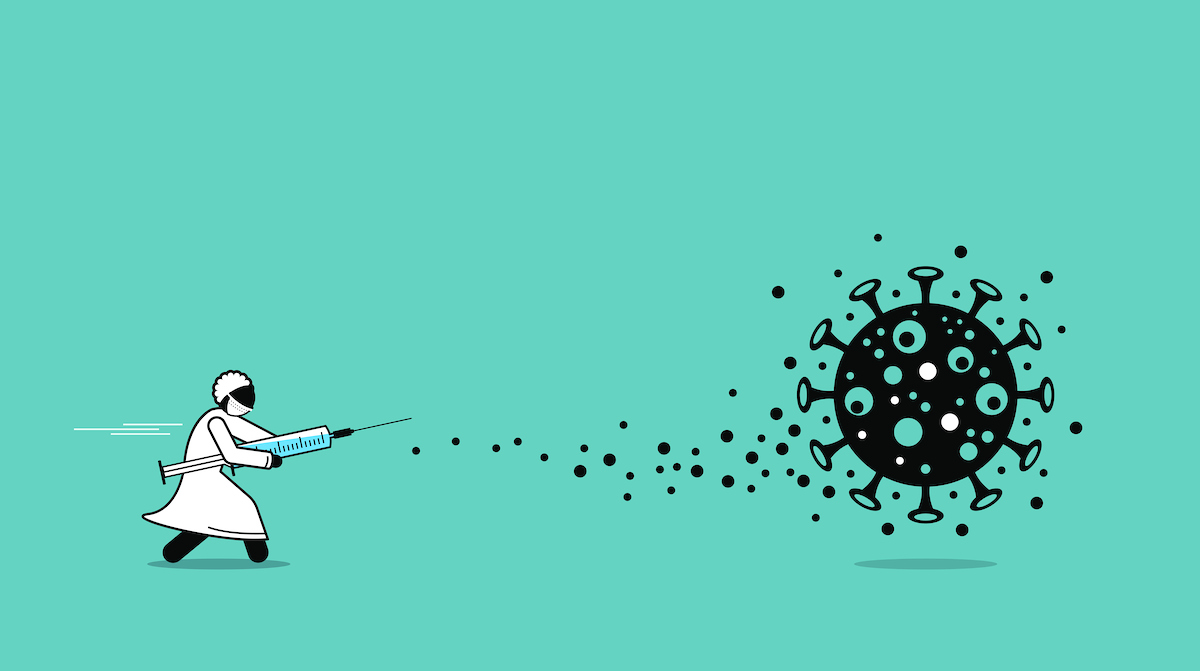Understanding COVID-19 Vaccines and mRNA
January 06, 2021 University of Maryland Medical System
Messenger RNA (mRNA) technology creates immunity in a different way than traditional vaccines and is one reason the coronavirus vaccine was developed in less than a year.
As COVID-19 vaccines begin to be distributed, many are wondering exactly how the vaccine works and if it is safe.
The COVID vaccines that are currently approved are from Pfizer-BioNTech and Moderna, Inc., who utilized Messenger RNA (mRNA) technology to create their vaccines.
This breakthrough technology, which creates immunity in a different way than traditional vaccines, is one reason the COVID vaccine testing and development took less than a year.
How Vaccines Work
When a person is infected with a germ, whether a virus or bacteria, the immune system creates special proteins, called antibodies, that help protect against future infections from that germ. The next time your immune system sees that germ, it “remembers” and uses the antibodies to fight against the infection. Some antibodies only last a few months, while others can protect you for a lifetime.
Vaccines create antibodies that allow your body to protect itself from future infections without actually getting sick.
Previously developed vaccines contain very small amounts of viruses or bacteria that are dead or greatly weakened. They trick the immune system into believing that the body is being infected.
The COVID vaccine is no different in that it creates antibodies, but it uses a different set of tricks than traditional vaccines to create coronavirus immunity.
How mRNA Vaccines Work
Messenger RNA is a piece of genetic material that cells use as “instructions” to create certain proteins in the body. It is like a bit of computer code.
When it’s not inside a cell, mRNA needs protection to keep it from disintegrating. This is why the vaccines require cold temperature storage. To keep the mRNA from disintegrating when it enters the body, the COVID-19 vaccines use fat bubbles to shuttle the mRNA to certain cells.
The mRNA instructs these cells to create “spike proteins.” These proteins simulate part of the SARS-CoV-2 (novel coronavirus) cell structure and trick the body into believing it’s infected with the virus.
In the case of the mRNA vaccines, your body is never exposed to the germ but is still able to produce an effective immune response.
What’s in the COVID Vaccines?
Like all other vaccines approved by the Food and Drug Administration, COVID vaccines do not contain toxic or harmful ingredients. This is another common vaccine myth.
One of the benefits of using the current COVID vaccines is that they avoid some of the issues some people may have with certain vaccines.
The vaccines aren’t made using egg proteins, so unlike some forms of the flu vaccine, people who have an egg allergy can take the vaccine.
Additionally, human fetal cells aren’t used during the vaccine development process. This makes the COVID vaccines a suitable option for individuals who object to this practice.
How Long Will Immunity Last?
Scientists are still studying exactly how long the vaccine’s protection will last. The volunteers who were part of the COVID-19 vaccine studies agreed to be followed for two years to help researchers determine exactly how long immunity lasts.
Both the Pfizer and Moderna vaccines require two doses to achieve immunity. This ensures that your immune system will build up enough antibodies to remember and protect against future COVID infections. Learn more important facts about the COVID vaccine.
Can You Get COVID from the Vaccine?
Vaccines that contain either dead germs or small pieces of germ protein can’t make you sick. This is a common vaccine myth. Some vaccines have some mild side effects, such as fatigue or a low-grade fever. This is a result of the body's immune system response, not the virus.
Will an mRNA Vaccine Affect My DNA?
Because mRNA “instructs” cells to perform certain actions, some people have expressed concerns about the vaccine affecting their DNA. This is not true. mRNA vaccines will never interact with the body’s DNA. In fact, once the cell has finished using the mRNA, the cells break it down and eliminate it from the body.